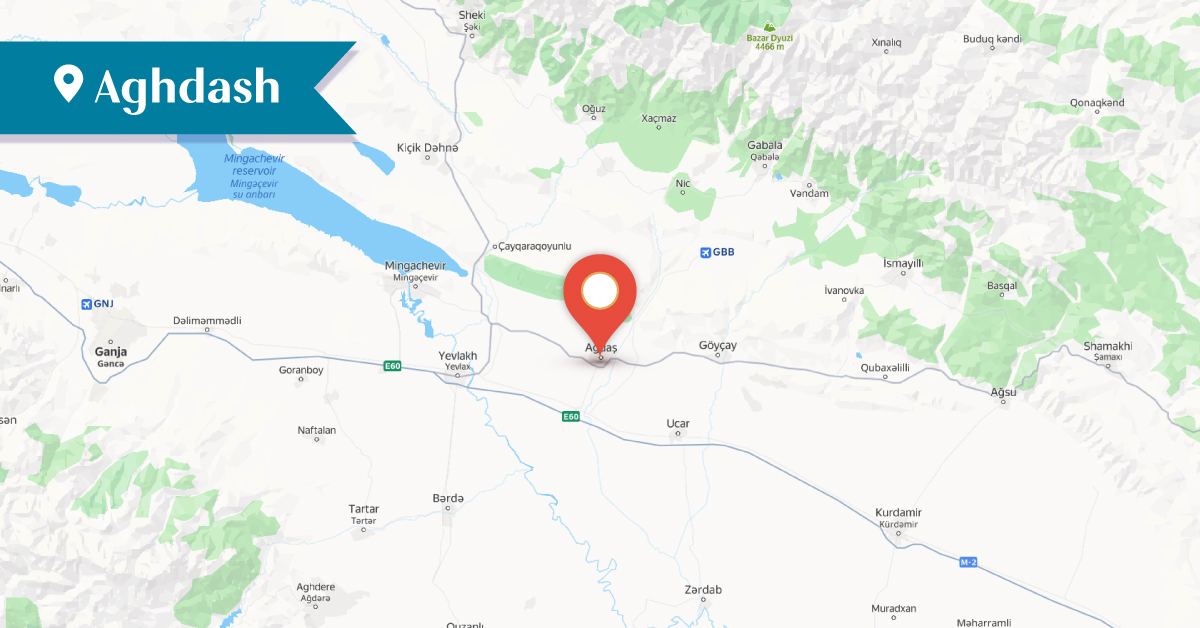2025
2025
2025-09-22

The settlement of Aghdash was located in the Aresh district of the Elizavetpol governorate. During the Soviet and post-Soviet periods, it served as the center of the district of the same name. In the 19th century, Armenians settled here from Gandzak, Shamakhi, Shaki, and Shushi, who were mainly engaged in trade and crafts. Among the Armenians there were also public sector officials. The commercial and economic life of Aghdash was enlivened largely thanks to the Armenians. The Armenians of Aghdash were also engaged in sericulture and agriculture. The number of Armenian shopkeepers was considerable—about 200 people. In addition to local Armenians, Armenian merchants from Nukhhi and Artsakh were also involved in trade activities, coming to Aghdash during the summer to purchase various goods.
In Aghdash, the spacious two-story inn of the Gyanjetsyan family, located near the town, was well known.
The population of the town in 1897 was 528 people, of whom 120 were Armenians. At the beginning of the First World War, the population of the town had reached about 2,000.
For a long time, there was no Armenian school in Aghdash. Only in 1916, thanks to funds provided by the Gyanjetsyan family from Shushi who resided in Aghdash, a school was opened in one of the houses belonging to that family. However, from 1918 it ceased to operate.
The Armenians of Aghdash also did not have a church. The Gyanjetsyan brothers decided to allocate 25,000 rubles for the construction of one. Karapet Gyanjetsyan also planned to build a house for the priest adjacent to the church. However, after his death, the 10,000 rubles he had bequeathed for the church’s construction could not be used for a long time. His son Samson attempted to continue the project, but he was killed during the Armenian-Tatar clashes of 1906. As a result, a church was never built in Aghdash.
The year 1918 was disastrous for the Armenians of Aghdash and the surrounding villages. Taking advantage of the state of anarchy, local Turkic–Tatar armed groups launched attacks on the Armenian population, killing many and seizing their property. The situation deteriorated further after the establishment of the Republic of Azerbaijan and the entry of Ottoman troops into the region, when massacres against Armenians became widespread. Even the small number of Armenians who had converted to Islam were not spared. On May 24, 1919, coinciding with the first anniversary of Azerbaijan’s independence, the 21 Armenians still residing in Aghdash were killed. Five days later, the remaining Armenians of the town were also massacred in an operation organized by the local governor.
On August 27, 1919, Levon Vardapet, the deputy of the Armenian Church diocese of Gandzak, wrote to the Catholicos of All Armenians alarming that in Aghdash and the surrounding Turkic villages there were many Armenians who had been forcibly converted to Islam. Lacking means of livelihood, they were on the brink of starvation. According to the deputy, many regarded relocation to the Republic of Armenia as their only path to survival. However, the Azerbaijani authorities did not permit this, intending instead to massacre them later. It was only in the autumn of 1919, through the mediation of Colonel William Haskell, the Allied High Commissioner in the region, that the surviving Armenians from Aresh and Nukhi were able to relocate to the Republic of Armenia.
All property belonging to the Armenians passed into the hands of the local Turkic–Tatar population. After the establishment of Soviet rule, this plunder was legalized by the Azerbaijani authorities.
During the Soviet period, a small number of Armenians resettled in Aghdash. By the mid-1980s, their number amounted to 18–20 families. However, in 1988 they were forced to leave Aghdash to escape the massacres. The Armenian presence in Aghdash thus ended. Azerbaijani authorities also destroyed the local Armenian cemetery.
Bibliography
Harutyunyan, A. H. The Turkish Intervention in Transcaucasia in 1918 and the Self-Defense Battles. Yerevan, 1984, p. 228.
Karapetyan S., The Armenian Lapidary Inscriptions of Aghvank Proper, Yerevan, 1997, p 5.
Bishop Makar Barkhutaryants. The Land of Aghvank and Its Neighbors. Artsakh. Yerevan, 1999, p. 144.
Karapetyan, S., Aghvank Proper, Part 1, Yerevan, 2024, pp. 14-16.